Canada and USA
The 50 Greatest Lightweights of All Time: Part Five (10-1)
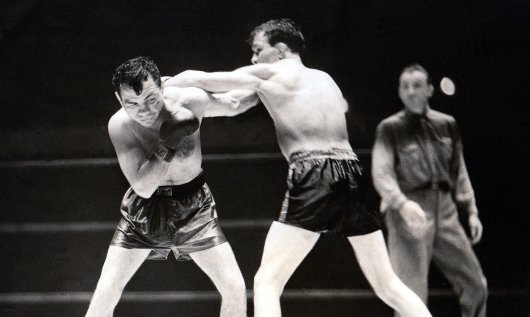
By Matt McGrain
Welcome to the final part of this series and to the top ten at lightweight.
#10 Lou Ambers (91-8-7)
The hook Ambers generally hangs his contendership for top ten status on is his win over Henry Armstrong, but this 1939 victory was tarnished somewhat by the fact that Armstrong was penalized so many rounds for low blows, five in total. The lightweight who could have beaten Ambers and also give away so many rounds has probably never been born, although he was stopped once at the poundage, by Lew Jenkins who turned the trick only after Lou’s admired speed of hand and foot had begun to slip.
That said, Ambers was able to win rounds without fouling, and one needs to consider for a moment the difficulty in remaining poised and vertical while Hammerin’ Hank repeatedly hits low. If Armstrong had been dialed in, it’s possible that the result would have been different, but being hit below the belt brings its own problems and Ambers did not bend; he held the line and took the win.
For me though, it is primarily his series victory over Tony Canzoneri, another great lightweight champion, and a man he met no fewer than three times for the title, that scrapes him into the ten.
Their first fight (pictured; Canzoneri on the left)) was won by Canzoneri, who was brilliant that night. Film has survived and it is a treat to watch him dance and vanish and batter the granite-hewed Ambers to the canvas. But in their rematch the following year, 1936, Ambers hammered Canzoneri, right after Canzoneri’s victory over Jimmy McLarnin, no less; in their 1937 contest he was even more dominant, one judge scoring it 15-0 in Lou’s favour.
Other top men mastered include Sammy Fuller, Fritzie Zivic (he may have been a little lucky in taking this decision), Frankie Klick, Enrico Venturi, Davey Day, Pedro Montanez and Tommy Cross. It is a towering resume, a fabulous testimony to his speed and skill, “the man who wasn’t there,” a brilliant, speedy boxer who fought with the aggression and demeanor of a punching swarmer.
Other Top Fifty Lightweights Defeated: Henry Armstrong (#18), Tony Canzoneri (Top Ten)
#09 – Tony Canzoneri (137-24-10)
Tony Canzoneri’s 7-4 record in lineal title fights gets him in to the top ten just a hair in front of Lou Ambers, despite Ambers having taken their series 2-1. The more closely you look at this 7-4 ledger, the more impressive it gets, as it is very clear that his first match with Barney Ross could have gone for rather than against him and even the decision in their rematch was seen by some as an injustice.
An astonishing fighter, Canzoneri opened up a new avenue for boxing technique but was followed by almost nobody due to the difficulty of mastering it. All feints and leans and surprising punches, I have, in the past, described his style as vaporous, a hellish blend of vanishing physicality and punishing power.
Having lost his featherweight title in 1928 he spared little time in assaulting the lightweight division but was turned away by Sammy Mandell in 1929. This did not discourage him, and when Al Singer came to the title, a man with whom Canzoneri had already boxed a draw right after dropping his featherweight crown, his time had come. In what The New York Times deemed “one of the most startling upsets” of all time, he blasted Singer out in a single round. He was no less brilliant in twice turning away his old nemesis Jack “Kid” Berg, absolutely butchering the man who had crushed him in 1930. The wonderful Kid Chocolate dropped a close decision to him in 1931 and fell to him in just two in 1933; footage of one of these contests is readily available and is as beautiful an exhibition of box-punching as can be seen anywhere.
One more successful defense against Billy Petrolle preceded his losing the lightweight title to Barney Ross by way of controversial decision; when Ross moved up, Canzoneri took the title once more, this time against no less a figure than Ambers. Ambers immediately beat it from him, and repelled him in a defense to win their rubber, but considering his victories over Wesley Ramey, Frankie Klick and Leo Rodak in addition to his wonderful title-work, it is clear that he shades Ambers, however narrowly.
But why no higher? Canzoneri can sometimes be found at the very highest reaches of such lists.
In short, the answer is the list itself. I haven’t been constructing such lists for a number of years now and have become wary of fighters who let a lot of men into consideration for placements. Billy Petrolle beat him and appears at #40; without that victory, he would not appear. Wesley Ramey beat him and appears at #34. Barney Ross defeated him twice, and a #20 ranking was his reward, without it, he topples. Lou Ambers is at #10 and in no small part this is due to his head-to-head superiority over Canzoneri.
Work like this generates its own gravity, its own logic. In my estimation, Canzoneri lost too many key fights to rank higher than #9.
Other Top Fifty Lightweights Defeated: Lou Ambers (Top Ten), Jack “Kid” Berg (30), Billy Petrolle (40).
#08 – Freddie Welsh (74-5-7; Newspaper Decisions 47-23-11)
Freddie Welsh was crazy. Whilst his compatriot Jim Driscoll was born into poverty and turned to boxing as a means to elevate himself, Welsh came from a family of wealth and when he went to America to ride the rails and fight as a professional he was still just a boy, bound by some savage impulse most of us cannot understand.
On paper his best run came before the title. In 1907 he turned the corner, boxing an ND over six rounds with the more established Jim Driscoll before adding an additional 17-0-1. In 1908, he took his step up but dropped a ten-round decision to emerging demi-god Packey McFarland. At this point the press was still less than impressed with Welsh who the New York Sun named a “second-rater,” criticizing McFarland for failing to put him away. He would change minds by going 6-0-2 for the rest of the year, boxing a draw with McFarland and picking up a win over the reigning featherweight champion Abe Attell.
When he headed home in 1909 it was as one of the best lightweights anywhere in the world, and picking up the European and British titles against the excellent Johnny Summers seemed almost a routine matter. He got another stab at McFarland, the man he never could best, boxing a controversial draw but in the fifty-six fights that had followed his loss to his nemesis, Welsh slipped up just once, against Matt Wells. Future champion Willie Ritchie, Pal Moore, Matty Baldwin, future welterweight champion Jim Duffy and Jim Driscoll all fell to him in this time. After he lifted the title in 1914, Welsh took something of a low-road, preferring non-title fights and no-decision fights to legitimate title affairs, but perhaps he had earned it. Regardless, he continued to hoover up top-draw scalps including Jimmy Anderson, Charley White, Frank Fleming, Ad Wolgast, and best of all, Benny Leonard in a non-title fight in 1916.
Welsh “not only boxed with wonderful cunning but he sent in several blows that [shot] Leonard’s head back,” reported The New York Tribune. “Round after round the confident smile of Leonard dwindled whilst the surly grin of Welsh widened.”
It was his finest moment.
Leonard would eventually get the best of him, and McFarland, too, shaded their series, but these are two of the most wonderful lightweights in history. The surviving film of Welsh reveals a boxer equal to the legend in print, difficult to hit, quality of jab, capable of direct punching and as tough as they come.
Certain inconsistencies married to a sometimes unfortunate laziness in no-decision affairs bring him up short at number eight, but he is good for the spot.
Other Top Fifty Lightweights Defeated: Benny Leonard (Top 10), Willie Richie (#27), “Lockport” Jimmy Duffy (36), Battling Nelson (#43).
#07 – Ike Williams (127-27-4)
I am not apologizing for placing Ike Williams #7, but those among you who have opinions on such matters generally hold them dear, so I will take a moment to explain why he didn’t make the top five.
In his incredible career, Williams defeated, among many others, Sammy Angott and Kid Gavilan. But he never met them at the lightweight limit, and so these are not lightweight victories. Williams is credited for them at welterweight and pound-for-pound, just as two of his three victories over Beau Jack are treated as welterweight and middleweight wins rather than lightweight triumphs
Williams did beat Beau Jack once at lightweight, and this victory ranks just behind victories over Bob Montgomery and Willie Joyce as his very best. Against Montgomery, Jack went 1-1. The two swapped knockouts, Montgomery stopping Williams in 1944 before Williams entered his savage prime; Williams in turn stopped Montgomery in 1947, the first of seven straight losses Montgomery suffered before his retirement. Against Willie Joyce, Williams went 1-3 losing three times to a fighter who, in fairness, probably represented his stylistic cryptonite. This makes Williams 3-4 against other men who appear on this list at the poundage. This is considerably worse than those ranked above him.
The list is far from the final word on quality opposition, but it is significant that against the very best lightweights he met, at lightweight, Williams couldn’t manage even 50-50. That is not top five form by my eye, not when he is no longer supported by wins he posted at welterweight and middleweight.
That’s the negative stuff out of the way – what about the positive? What makes Ike Williams top ten?
Firstly, there is his world-title reign. Ike went 6-1 in lineal world title fights and the “1” was suffered in 1951 with the poundage almost past him and the battle to make it as tough as the one Jimmy Carter waged against him. Before that, Williams was close to invincible. He grabbed a strap in 1945, destroying the excellent Juan Zurita in two having established himself four months before in a similarly brutal dispatch of Dave Castilloux in five; in 1947 he became undisputed and lineal based upon perhaps his greatest lightweight performance, a six round obliteration of Bob Montgomery who found himself helpless on the ropes against the most devastating technical puncher of the lightweight era.
Five defenses followed in a period during which only a welterweight Kid Gavilan could best him, despite the fact that Williams operated almost exclusively against ranked men. By the time Carter got to him in 1951, his ability to make the limit was all but a thing of the past.
Other Top Fifty Lightweights Defeated: Bob Montgomery (18),Willie Joyce (19). Beau Jack (31).
#06 – Carlos Ortiz (61-7-1)
Carlos Ortiz is one of the greatest 135lb champions in history, 11-2 in lineal title fights, king in eight different calender years, ranked among the best lightweights in the world for an incredible eleven years. A champion at 140lbs, too, his career is a glittering monument to fistic excellence.
Ortiz arrived in earnest in 1958, dropping a questionable decision to the ranked Johnny Busso, a decision he justly reversed in an immediate rematch. Puerto Rican by birth, both of those combats were staged at Madison Square Garden, where he would become something of a favorite.
He was identified as a title threat later that same year in dominating Dave Charnley in London. Charnley was fancied the puncher but Ortiz attacked him directly and aggressively, illustrating a justified confidence in an iron chin and a stern punch. Neither rescued him at the year’s end when he stumbled to a majority decision loss against Kenny Lane. Lane was after the light-welterweight crown, so light-welterweight was where Ortiz headed, avenging himself against his rival in picking up that title. This kept him clear of the lightweight title picture until 1962 when he met with the reigning champion Joe Brown.
Ortiz boxed brilliantly that night in the Garden, producing as consummate a title winning performance as can be seen on film. He explored Brown’s limits over the first twelve minutes, losing, for me, those four rounds but establishing a pace that the champion could not comfortably maintain before using the fact to expose chinks in his armour. Brown was a wonderful, cagey, clever fighter but Ortiz basically beat him one-handed, tattooing him with jabs while holding in reserve the virtual threat of his right which forbade Brown his preferred approach, that of trying to bring his opponent onto his punches – too risky against Carlos. I thought Ortiz won every remaining round in the contest to end one of the greatest title reigns in history and begin another.
Ortiz staged four successful defences in that first run, outstanding among them his fifteen round decision over old foe Kenny Lane, another left-handed clinic, before he ran into an inspired Ismael Laguna on enemy territory in Panama. Laguna won a majority decision but the return was in Puerto Rico where Ortiz reclaimed his title. Ortiz staged another five successful defenses in this, his second spell in command of the world title, including another defense against Laguna, who he dominated in New York to take the rubber.
Carlos Teo Cruz unseated him by split decision in August, 1967; Ortiz would never again become the pre-eminent lightweight in the world, but he had by this time marked his name among the immortals.
Other Top Fifty Lightweights Defeated: Joe Brown (11), Ismael Laguna (24)
#05 – Packey McFarland (70-0-5; Newspaper Decisions 36-1-1)
Something that strikes upon reading newspaper reports from the day after a Packey McFarland fight is how often words like “bewildered” and “uncertain” are used to describe the disposition of the opposition. McFarland was one of those rare wolves, so far ahead of the pack that sharing a ring with him promoted confusion; think Pernell Whitaker – think Roy Jones.
There was no comfort zone when boxing McFarland. His left hand was a scalpel but one that was wielded with evil intent, key in McFarland’s fifty stoppages. Fifty-six others dropped decisions or newspaper decisions; six scrambled draws. McFarland was always on the right side of those draws, however, and the one he posted in the National Sporting Club, London, in 1910 against Freddie Welsh was “unanimously declared the worst [decision] ever seen” there. Even those who bet on Welsh “joined in the demonstration.” Welsh, who as we have seen was fearless, ambitious and in love with the art, had no joy at all with McFarland; in fact he had dropped a decision to Packey two years earlier back in his native USA.
The USA is where Packey had turned professional, probably in 1904. By 1907 there were those prepared to predict he would get the better of Joe Gans, a fighter he would sadly never meet, while he also enjoyed himself getting the better of the likes of Battling Nelson in exhibitions. He was still a teenager.
Not a man who loved boxing, he was a man who absolutely excelled at it. What this led to is arguably the greatest paper record in history, 106-1-6. That single loss, if it occurred, was suffered against the otherwise unremarkable Dusty Miller who defeated him in an uncertain contest in the summer of 1904. He was sixteen years old. Miller had been a professional for five years.
I say “if it occurred” because the bout is a matter of some controversy. Another fighter named “McFarland” was active at that time and the press of the day often listed Packey as undefeated. It may be the case that it will never be known, definitively, whether or not this fight took place and therefore it may be that it is never known whether or not McFarland was undefeated. His achievement, nevertheless, of going unbeaten after this fight is one of the most extraordinary feats ever achieved in the ring. McFarland kept to the same breakneck schedule as his most adventurous peers, fighting twenty-three times in 1912, eighteen times in 1911. The difference is he didn’t lose. And his competition was excellent. This may not have been the strongest of eras, but it had a wealth of fine fighters, men like Leach Cross (who beat Joe Rivers and Battling Nelson), Owen Moran (one of the few men accredited with beating Wolgast and Nelson both), a lightweight Jack Britton and also Jimmy Duffy (ranked here at #36) who according to one source “hadn’t landed ten punches in ten rounds” on McFarland.
A fine chin likely barracked the McFarland defense, but it’s hard to be sure. He hardly ever got hit.
Two things keep him from an even higher ranking. First, he never won the world title, able only to convince the fearless Welsh to put the championship on the line against him, the result that theft of a draw. Secondly, Packey departed lightweight later in his career, probably a little too big to fit snugly into even the modern limit.
But his astonishing run in the division and the scalps he took during it is so special that it hardly matters. He is firmly ensconced within the Top Ten regardless. The final word goes to one Joe Gans:
“What I see in him,” he said, “is another Joe Gans.”
Other Top Fifty Lightweights Defeated: Freddie Welsh (Top Ten), “Lockport” Jimmy Duffy (36).
#04 – Pernell Whitaker (40-4-1)
Pernell Whitaker is the greatest defensive specialist of whom extensive footage exists, not just at lightweight but in all of boxing. He was also essentially unbeaten at the lightweight limit. Nevertheless, his first encounter with a top lightweight, Jose Luis Ramirez, in 1988, was judged a loss by the professional judges in attendance. It is perhaps the most ridiculous theft ever captured on film; Whitaker was a clear winner.
His hunt for a strap met with success less than a year later against Greg Haugen, a fight in which he was no less clear a winner but which the judges managed to score correctly. Haugen was tough, illustrated by his reclamation of his trinket against Vinny Paziena over fifteen a year earlier. Before Haugen-Whitaker it was felt that Haugen would have to push Whitaker back, cut off the ring, take him late, drown him in that deeper water. The fight itself could not be more different then envisaged. Whitaker boxed aggressively, right in front of his man, shifting the angles slightly with tiny lateral moves and relying upon those wonderful feet to get him out of trouble (of which there was none) all the while driving Haugen back. Haugen was forlorn, robbed of his fight plan, reduced to pecking forwards with the jab before giving ground in front of Whitaker’s wonderful combinations.
This may be the most instructive Whitaker performance of all. He did not lose a single round, he established a horrible, clattering jab which he was happy to triple down on while opening up Haugen to the body; if he felt like it he led with the southpaw left, drove Haugen to the ropes, calmly picked his spots.
The unbeaten Lou Lomeli was the next ranked man to try his luck with Whitaker and the impression that Whitaker gave battering Haugen, namely that he was stiffer puncher than he was being credited for, was underlined by a vicious third round stoppage. Whitaker followed this with vengeance over Ramirez, his audition for recognition as the best jabber in all of boxing. It was another fight in which I did not score his opponent a single round, absurd domination against a world class fighter.
Freddie Pendleton gave him more problems with that right hand of his in 1990, but Whitaker was clearly the winner, Pendleton sagging by the time of the twelfth and final round before the great Azumah Nelson stepped up to hand Whitaker the nearest thing he would have to a close call at the poundage. Whitaker made this up to us with a single round destruction of the excellent Juan Nazario, who was fresh from an eighth round stoppage of Edwin Rosario but helpless before a primed “Sweet Pea.” Anthony Jones and Poli Diaz won perhaps a single round between them in dropping decisions in title fights before Jorge Paez provided some stiffer resistance in a clear losing effort at which point Whitaker departed the division, leaving all three major belts vacated in his wake.
Whitaker fought in what was a relatively weak era for lightweights, but he compensated for this in executing the most dominant spell of all the great lightweights. The great ease with which he outclassed ranked men was never repeated, before or since. More than that, he was so good that he was able to do that rarest of things, deconstruct boxing in such a way that it became just another sport. You play basketball, you play football, but you don’t play boxing – unless you are Pernell Whitaker.
Only the relative weakness of his competition renders the peak of lightweight a trinity rather than a quaternity.
Other Top Fifty Lightweights Defeated: Jose Luis Ramirez (#47)
Intermission.
In introducing Part Nine of my 100 Greatest Fighters of All Time series I wrote that “[i]n the end it was the lightweights that were the most troublesome. They crowd both the mouth of the top ten and the mouth of the top twenty; Canzoneri, Whitaker, McFarland – Duran, Gans, Benny Leonard. So different are their strengths and their wonderments that comparing them directly, even if they weighed the same as some trusted companion taped their hands, told them truth as they prepared to stalk out and defend their titles or their pride…an unquantifiable mess of wonderment and sagacity.”
No shit.
One thing has been clear to me from the very beginning is that there would be three men at the top of the mountain and that those three men were competing, at the start of the analysis, on equal terms for the top spot.
To my great joy (and relief) this has not been the case; yes, these three are the holy trinity of lightweight boxing, yes, there is a sliver of daylight between these three and the rest of the top ten, but it is clear now after this job of work in which order they should lie. In the months before coming to my analysis of Benny Leonard, Roberto Duran and Joe Gans, I have been analyzing their opponents, and their opponents have told me who is #1 and who is #3. I wouldn’t throw anything hard at anyone that disagreed, but my own mind is sure.
Now listen.
This is how I have them:
#3 – Roberto Duran (103-16)
If Pernell Whitaker may be the finest defensive machine ever captured on film, Duran may be the finest fighter full stop. That’s a bold statement, and I’m carefully quantifying it with that “may be” but he is in that argument, and he was at his very best at 135lbs.
At the beginning of his journey he coasted like any other prospect, out of the featherweight division and into the lightweight, feasting on journeymen and busted former contenders, smuggled into a title shot on the back of brilliant performances against over-matched foes. Against champion Ken Buchanan he sustained his wonderful level of performance with a borderline great, a fighter he would express admiration for throughout his life; the title changed hands controversially, on an apparent low blow registered as a knockout. Despite the niceties, and to Buchanan’s great frustration, few doubted that the title was in the hands of the best.
The Animal Duran was born. If the division didn’t quite tremble, there were ripples.
His title reign, however, is possibly a tiny bit overrated in the great scheme of things. There have been better, perhaps, at the poundage. Duran liked unranked opposition and there were championship opponents that did not belong in the same ring as him, but he also did away with the top men in that time, allowing no fighter to gain a foothold in the division. Esteban De Jesus defeated him in a non-title fight, as discussed in Part 3, but Duran put him down in the 1974 re-match.
Ray Lampkin emerged as the next best lightweight upon De Jesus’ first undoing and Duran horrified with the torrent of abuse he heaped upon the pretender. Lampkin did well in the early going of that fight, boxing an organized retreat against a snorting champion whose pressure slowly withered him. In the final seconds of the penultimate fourteenth round Duran found him with the kind of punch that threatens an exhausted fighter’s life; reports on the after-effects vary but what is agreed upon is that Duran sent Lampkin to the hospital. Post-fight he promised that “next time I’ll send him to the morgue.”
Could it be that fear played a part in the capitulations of the contenders that followed Lampkin into the bear pit? It seems plausible upon watching the likes of Lou Bizzarro run and hold throughout the fourteen rounds he lasted with Duran in in 1976, but there is no doubting De Jesus gave his all in Duran’s thirteenth and final lightweight world title fight. The punch Duran landed to unman him was among the best he ever threw. De Jesus spent that fight boxing in his usual pragmatic fashion, engineering openings, countering, taking any opportunity that presented itself and he was running Duran reasonably close. The lazy jab Duran threw to bait him was neither feint nor punch but something in between. De Jesus moved in right-handed; Duran detonated an improvised right cross on his chin and De Jesus was crawling around the canvas in search of a rope.
13-0 in title fights then with a single loss to De Jesus in a non-title fight twice avenged with the prize on the line.
“I was born for this,” Duran offered after his final fight at 135lbs.
Hard to disagree.
Other Top Fifty Lightweights Defeated: Ken Buchanan (#23), Esteban De Jesus (21).
#02 – Benny Leonard (89-6-1; Newspaper Decisions 96-16-7)
I am trying to stop writing the phrase “the great Benny Leonard.” It trips off the tongue, sure, and it is the only sensible way to sum the man up in four words, but if you repeat it as often as I seem to be doing these days, it starts to lose its meaning. But what else to say about him?
Leonard makes a mockery of the notion that boxers from the 1920s were outmoded by evolution in pugilism. He moved like a ballerino, gliding away, floating in, his balance all but absolute. Leonard was not an Ali or a Sugar Ray, his moves were functional as well as effortless and beautiful, but the terrible threat of his punches were the reason for his mobility as he sought the proper position from which to punch.
He sought to punch Rocky Kansas from all angles when they met for the fourth and final time in 1922. Kansas hadn’t been stopped for eleven years and a hundred fights, but Leonard left him sagging after a savage assault the likes of which would arguably go unequalled until Ray Robinson hit his stride twenty years later. Leonard was that good; he stands that comparison.
Leonard-Kansas IV was not even a title fight but a stay busy battle fought at the highest level that might have led to some interesting complications had Kansas won. World titles, at this point in history, were more closely guarded by procedure than had previously been the case and a champion was less likely to suffer a contender loudly laying claim to his title after a close defeat or a newspaper decision; on the other hand a champion could still hide behind the no-decision rule – the rules seemed sure to birth a monster title-run.
It seemed that title-run might belong to Freddie Welsh. Hard to hit and granite of jaw, Welsh seemed impossible to beat in any no-decision bout, as proved to be the case when Welsh got the better of him in 1916 over ten, with the title on the line. No championship for Leonard, though the newspapermen in attendance naming him the better of the two but, unable to score the knockout, the reigning champion left the ring with the title.
You can almost see Welsh smirking down the century when, just under a year later, he granted Leonard a rematch, once again over ten rounds. But Leonard was all business.
“I am after the knockout,” he said. “I intend to win that title tonight or get well licked trying. This may be the last time I get a crack at Welsh.”
Leonard was aggressive, direct, and brilliant. In the ninth, he pinned Welsh to the ropes behind a wall of leather and as the Brit slipped, ducked, rolled, and caught his abuser’s punches on his gloves and arms, Leonard moved his attack downstairs. Welsh fought more than 150 fights and he was only stopped once – May 28th, 1917, in New York, New York when stopping him was the only way Leonard could win the title. That is the difference between the great ones and the true immortals: the immortals find a way.
Leonard made himself immortal over the following seven years. No lightweight could beat him. Lew Tendler probably came the closest, pushing him hard in a no-decision bout in 1922, so in 1923 Leonard granted him a decision bout over fifteen, boxed his ears off, sent him scurrying for welterweight.
Leonard retired the undefeated lightweight champion of the world. I credit him with seven title defenses (though he is 9-0 in title fights if we allow his Newspaper Decision win over Welsh in their first title fight), ignoring the one he staged against Jimmy Duffy at 140lbs. During this time he was, perhaps, a lightweight unbeatable. But he managed half the title domination of our number one.
Other Top Fifty Lightweights Defeated: Freddie Welsh (Top Ten), Lew Tendler (26), Rocky Kansas (48).
#01 – Joe Gans (145-10-16; Newspaper Decisions 13-2-5)
The Old Master, Joe Gans, 158 recorded victories to twelve recorded losses despite his turning professional in 1893, just thirty years after the Emancipation Proclamation. A fourth class citizen in a third class sport oozing unalloyed class in every move he made.
I’m going to control myself now and keep this as short as I can. Writing about what made Gans great – the greatest – has taken better men than me twice the word-count of this entire article and they still barely scratched the surface, so while they are in no way meant to be definitive, here are my thoughts.
Gans asked for his 1900 contest with Frank Erne in pursuit of the world title to be stopped due a cut caused by an accidental clash of heads. That is important to remember – he asked for it to be stopped.
Readers may remember Part Two’s profile of #35, Sid Terris. Terris “showed yellow” in a more minor contest from 1924, suffering a knockout loss to Eddie Wagner which did not convince the hardnosed reporters ringside. He spent years trying to wipe away the stain this apparent quit job wrought. Gans, in quitting to Erne, and then in his involvement with what was likely a fix against Terry McGovern in Chicago in 1900, had committed any and all of the sins Terris did, but in stereo.
That he re-emerged is almost a miracle. The complexities of being a black fighter in this era cannot be exaggerated. In his 1906 victory over Battling Nelson, Gans was hit low, butted, thumbed, but careful to help Nelson to his feet when he fell; always in the ring his appearance had to be that of a gentleman, especially when the opposition was white. But even good conduct wasn’t going to be enough to bring him back from a quit job and then a dive that saw boxing banned in Illinois. Only one thing could bring a fighter back from that: pure, unadulterated skill.
That skill fostered a three-year tear through what I am happy to call the deepest lightweight division in history. He smashed former “colored” lightweight champion Bobby Dobbs to pieces twice in 1901, added to his mastery of George McFadden, having already knocked out the era’s other defensive genius, Young Griffo, waiting patiently for the mistakes he would use to put his supposed peer away in eight. So consistently brilliant was he that despite the color of his skin and the fact that Erne had already repelled him once, a second title fight was made between the two.
“After knocking on the door for ten years,” wrote the Brooklyn Eagle, “Joe Gans, colored pugilist, is at last the lightweight champion of the world.”
It took ten years and fifty seconds; Gans dispatched Erne in the first.
Trials and tribulations; do they make the man? Gans had walked a hard and lonely road, a decade of warfare during which he had convinced the world of his brilliance, disgraced himself and convinced the world once more. Nevertheless, this is but a sliver of that which he achieved. He staged fourteen successful title defences – fourteen – if you’ve followed this series from the beginning, you’re scratching your head now, repeating the number, “fourteen?” Nobody does fourteen at lightweight. It’s absurd. And Gans defended against excellent competition.
When they finally finished him it was as if all the life had been bled out of him into the ring. Ill and worn when he lost his title, he passed away barely eighteen months after his final fight.
A phoenix, he burned bright for the duration of his incredible career and then turned to ash, perhaps repaying whatever cosmic debt blessed him with such greatness, such heart.
You can name Duran or Leonard and get no argument for me, but my selection for the greatest lightweight of all time is Joe “The Old Master” Gans. Nearly one-hundred years after his retirement, it can still be said of him, “we have never seen his like.”
Other Top Fifty Lightweights Defeated: Franke Erne (14), George McFadden (22), Young Griffo (#33), Battling Nelson (#43).
Those of you who have taken the time to read this series first to last, I thank you.
-
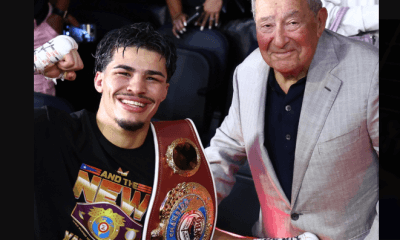
 Featured Articles2 weeks ago
Featured Articles2 weeks agoThe Hauser Report: Zayas-Garcia, Pacquiao, Usyk, and the NYSAC
-
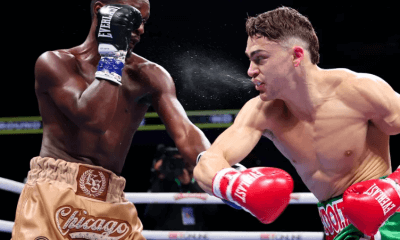
 Featured Articles1 week ago
Featured Articles1 week agoOscar Duarte and Regis Prograis Prevail on an Action-Packed Fight Card in Chicago
-
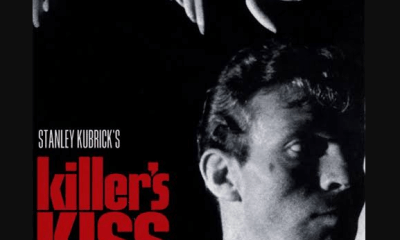
 Featured Articles5 days ago
Featured Articles5 days agoThe Hauser Report: Cinematic and Literary Notes
-
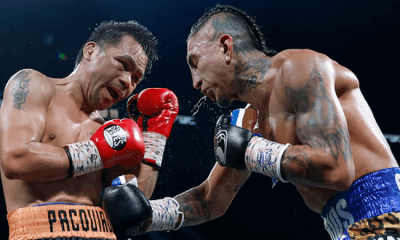
 Featured Articles3 weeks ago
Featured Articles3 weeks agoManny Pacquiao and Mario Barrios Fight to a Draw; Fundora stops Tim Tszyu
-
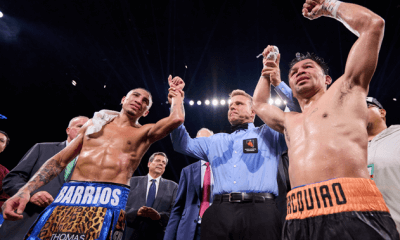
 Featured Articles3 weeks ago
Featured Articles3 weeks agoArne’s Almanac: Pacquiao-Barrios Redux
-

 Featured Articles2 weeks ago
Featured Articles2 weeks agoRemembering Dwight Muhammad Qawi (1953-2025) and his Triumphant Return to Prison
-
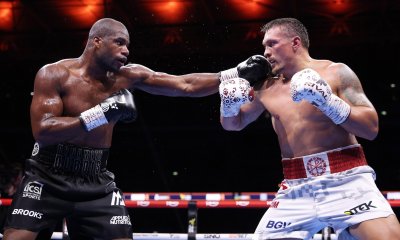
 Featured Articles3 weeks ago
Featured Articles3 weeks agoOleksandr Usyk Continues to Amaze; KOs Daniel Dubois in 5 One-Sided Rounds
-
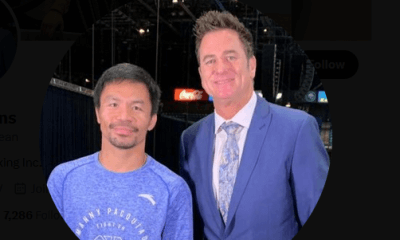
 Featured Articles4 weeks ago
Featured Articles4 weeks agoFrom the Boondocks to the Big Time, The Wild Saga of Manny Pacquiao’s Sidekick Sean Gibbons















